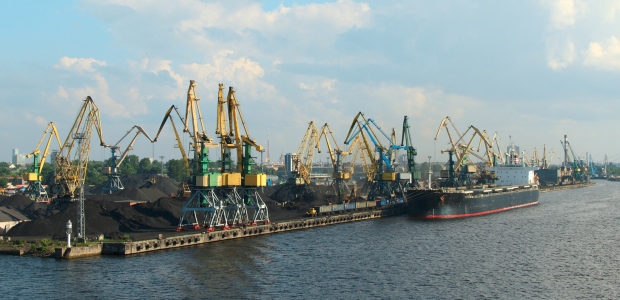
Will Montana Coal Go to China?
Will a plan to ship coal—the leading source of CO2 pollution—from Montana to China be halted following environmental review by two federal agencies, amid early signs that China might be stepping away from coal as preferred energy source?
- By Jack Tuholske, Ben Gustafson
- Jan 10, 2014
As the U.S. set its sights on regulating emissions from coal-fired power plants and eliminating dirty coal from the U.S. market, U.S. coal producers started looking for a new market that would be willing to accept “dirty coal.” They found that market, ironically, thousands of miles away, in China. A plan to ship coal from the richest coal reserves— Montana and Wyoming’s Powder River Basin—to Chinese and other Asian ports has stirred up opposition from a variety of environmental groups that want comprehensive calculations of the coal’s full impact (including the environmental impacts of mining and shipping). These groups raise the question of whether China really wants U.S. coal in the first place. Underlying these concerns is the fact that Powder River Basin coal is another carbon time bomb, with more potential emissions that our planet can tolerate. Two federal agencies will make decisions this year about the scope of the environmental review for coal export projects that will go a long way towards showing whether this administration is serious about reigning in CO2 pollution.
In 2011, the U.S. produced 1,094.3 million short tons of coal, second only to China on the global market. However, the U.S. remains first in estimated recoverable reserves of coal, with the Powder River Basin in Wyoming and Montana accounting for the largest coal reserves in the U.S. While coal remains the single largest generator of domestic energy (37% in 2012), it is also the dirtiest energy source, accounting for 45% of the world’s energy related CO2 emissions. Since 2007, U.S. production of energy from coal has been decreasing.
One would think the coal industry’s response to the shift from the dirtiest energy source to natural gas and renewables would be to scale back production. With the Obama administration calling upon the EPA to regulate both new and existing power plant emissions including CO2, coal’s dominance in domestic electricity production will continue to dwindle. This change has triggered a desperate attempt to find new markets. The coal industry, led by Arch and Peabody and assisted by Burlington Northern Santa Fe Railroad, has set its sights on new markets, the largest of which is China. Serving those markets would require a transportation infrastructure that supported exports abroad. The preferred route to China is by rail from Wyoming to ports in the Pacific Northwest West (PNW) causing huge disruptions in local communities burdened by the increase in rail traffic.
This route has been met with fierce opposition from both grassroots activists such Northern Plains Resource Council, “Power Past Coal” and national organizations including the Sierra Club. As a result of this opposition, the coal industry’s initial proposal for six new shipping ports in the PNW has decreased to three ports (Bellingham and Longview, Washington and Boardman, Oregon). If the coal industry succeeds, more than 100 million metric tons of coal a year will be shipped along the railroads of the PNW. This increased shipping of coal will have negative local impacts on air and water quality, will cause an increase in rail traffic, and will lead to the further destruction of the scenic Powder River Basin. It will also push our planet closer to exceeding tolerable CO2 thresholds.
The coal industry would like us to believe its assumption that China actually wants coal from the United States. However China is becoming increasingly concerned with its domestic pollution problem, and the rising incidences of smog and respiratory illnesses stemming from its heavy reliance on burning dirty coal. China has been dramatically increasing its use of renewables and recently called for the closing of thousands of small coalmines by 2015. Perhaps most telling, Goldman Sachs recently stated that investment in coal infrastructure is a risky bet and could create stranded assets.
The fight over coal export will advance over the next year as agencies determine the scope of their environmental review and public pressure against the new rail and export infrastructure mounts. Both the Army Corps of Engineers, with jurisdiction over the export terminals, and the Surface Transportation Board, with jurisdiction over the new rail construction needed to get the coal to market, will issue draft environmental impact statements delineating whether the agency will consider the full range of local, national and international impacts of the coal export gamble. Ironically, the Obama administration has already leased significant new coal reserves in the Powder River Basin. If the administration is serious about limiting our carbon footprint, saying no to coal exports is a good place to start. Powder River coal remains in the ground at present, waiting to see if the Asian market is real, or simply a last ditch effort from a declining industry.
About the Authors
Jack Tuholske is a visiting professor at the Vermont Law School.
Ben Gustafson is a second-year JD student and is the staff editor at VJEL. He graduated from the University of Minnesota and hopes to practice environmental law.